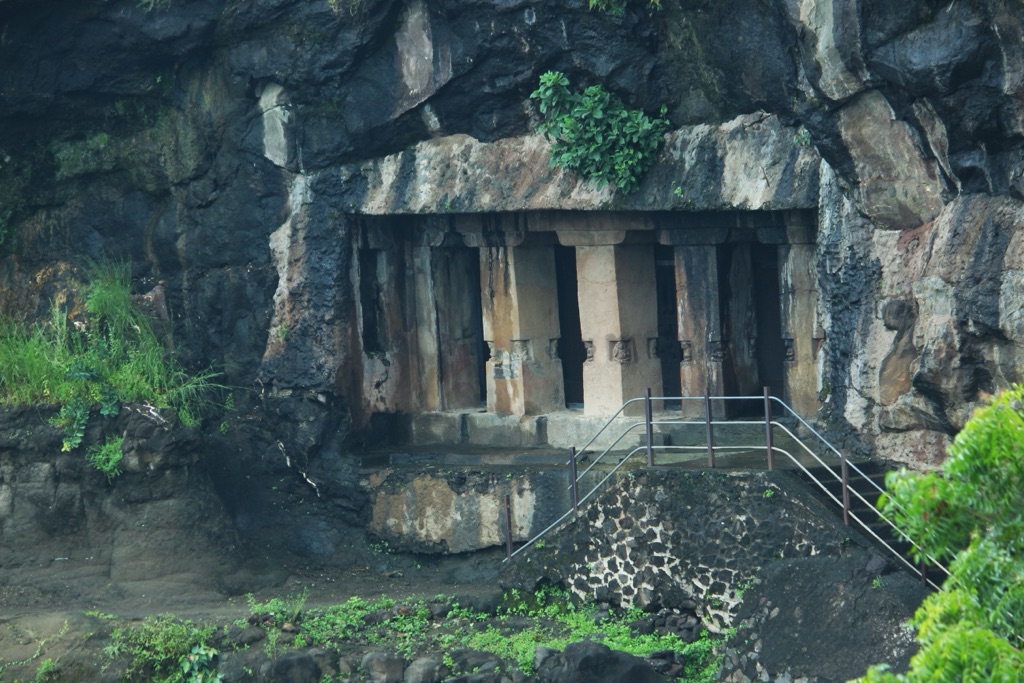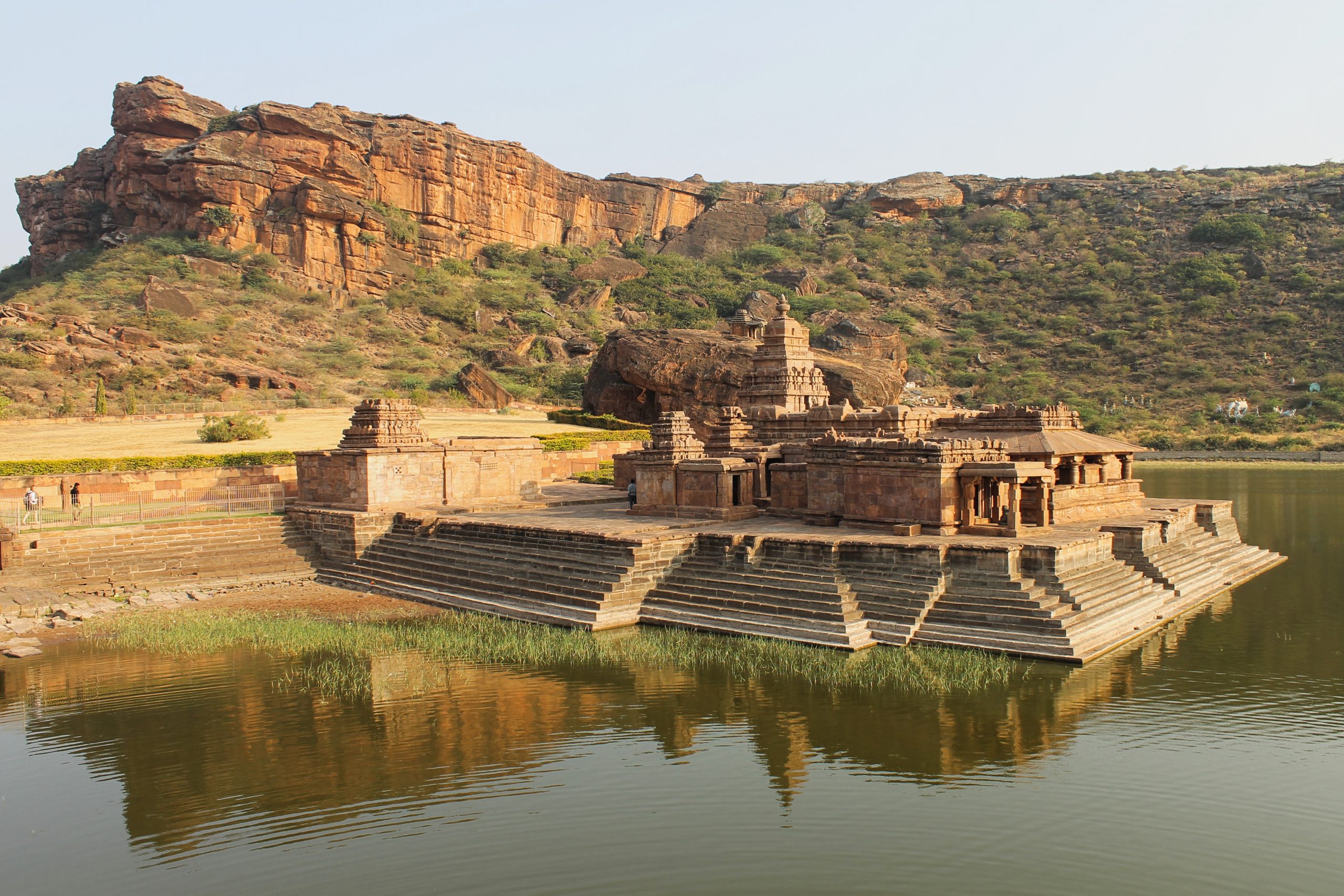The Bhutanatha group of temples is a cluster of sandstone temples located in Badami, Karnataka, India. These ancient structures, dedicated to the deity Bhutanatha, showcase the architectural prowess of the Chalukya dynasty. They sit on the eastern bank of the Agastya lake, reflecting a harmonious blend of Dravidian and Nagara architectural styles. The temples date back to the 7th and 11th centuries, offering a window into the religious and cultural life of the time.
Chalukya Dynasty
The Chalukya Dynasty, a prominent power in the Indian subcontinent, flourished between the 6th and 12th centuries AD, marking a significant period in the history of South India. Originating in the Deccan Plateau, the dynasty was divided into three main branches: the Badami Chalukyas (543-753 AD), the Eastern Chalukyas of Vengi (624-1070 AD), and the Western Chalukyas of Kalyani (973-1189 AD). These periods were characterized by remarkable achievements in art, architecture, and governance, leaving a lasting legacy on the region’s cultural landscape.
The Chalukya Dynasty is renowned for its significant contributions to Indian architecture, particularly the development of the Vesara style, which is a blend of the northern Nagara and southern Dravidian architectural styles. The rock-cut caves of Badami, and the temples at Pattadakal and Aihole, are standing testaments to their architectural ingenuity. These structures not only served religious purposes but also acted as centers for education and cultural development, showcasing the dynasty’s commitment to fostering a holistic societal growth.
Religion played a central role in Chalukyan society, with Hinduism being the predominant faith. The dynasty was instrumental in promoting Shaivism and Vaishnavism, though they also showed tolerance towards Jainism and Buddhism, as evidenced by the diverse religious monuments constructed during their reign. The patronage of these religions led to a vibrant cultural and spiritual life, with festivals and rituals becoming an integral part of daily existence for the people of the Chalukya Empire.
The social and daily life under the Chalukya rule was marked by a well-organized administrative system. The empire was divided into provinces, which were further subdivided into smaller administrative units, ensuring efficient governance. Agriculture was the backbone of the economy, supported by advancements in irrigation and land management. Trade also flourished, with the Chalukyas establishing extensive networks both within the Indian subcontinent and with distant lands, contributing to the prosperity of their realm.
Among the notable rulers of the Chalukya Dynasty, King Pulakeshin II of the Badami Chalukyas stands out for his military prowess and administrative skills. His reign (610-642 AD) was marked by numerous military campaigns that expanded the empire’s boundaries. Pulakeshin II’s confrontation with the mighty Harsha of Kanauj is particularly celebrated, showcasing the Chalukya’s military capabilities. His court was a hub of intellectual and cultural activities, attracting scholars and artists from far and wide.
The Eastern Chalukyas of Vengi, although often overshadowed by their counterparts, played a crucial role in the cultural and political landscape of eastern Deccan. Their capital, Vengi, became a cultural melting pot, fostering the growth of Telugu literature and fine arts. The Eastern Chalukyas acted as a bridge between the south and the north, facilitating the exchange of ideas and traditions.
The Western Chalukyas of Kalyani, under the leadership of figures like Somesvara III, who authored the encyclopedic ‘Manasollasa’, further enriched the cultural and intellectual milieu of the Deccan. Their rule is noted for the architectural marvels in the form of temples and educational institutions, which played a pivotal role in the cultural renaissance of the region.
The Chalukya Dynasty’s history is punctuated by numerous wars and battles, most notably their rivalry with the Pallavas of Kanchi. This conflict, spanning several generations, was characterized by both military confrontations and cultural competition, significantly influencing the political and cultural contours of South India. Despite the eventual decline of the Chalukya Dynasty, their legacy in art, architecture, and governance continues to influence the Indian subcontinent.

Aurangabad Caves
The Aurangabad Caves are a group of 12 rock-cut Buddhist shrines located in Aurangabad, Maharashtra, India. They date back to the 6th and 7th centuries AD and are renowned for their stunning architecture and remarkable sculptures. These caves are divided into three separate groups and are known for their iconography and artistic merit, particularly Cave 2, which houses an exquisite sculpture of a Bodhisattva praying for deliverance. The caves offer a rich tapestry of ancient Indian history and religious art, reflecting the Buddhist traditions and the intermingling of Hindu and Jain influences over time.

